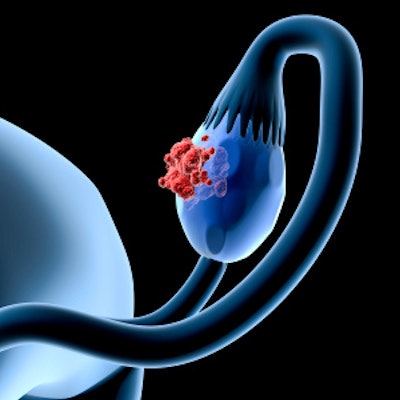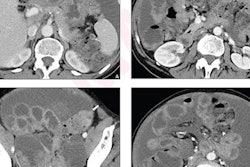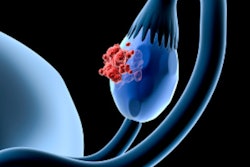
Radiomic features extracted from contrast-enhanced CT can help classify subtypes of epithelial ovarian cancer, a study published December 5 in JAMA Network Open found.
A team of researchers led by Mandi Wang, PhD, from Shenzhen People's Hospital in China reported that a CT radiomics model they developed demonstrated excellent performance for classifying both high-grade and non-high-grade serous carcinoma.
"The preoperative prediction of the histologic subtypes in epithelial ovarian carcinoma could notably benefit the clinical management and prognosis evaluation," Wang and colleagues wrote.
Previous research has suggested that CT-based radiomics can help evaluate ovarian cancer, including differentiating between cancerous and noncancerous lesions and predicting outcomes. However, the research team noted that there is a lack of data focused on whether CT radiomics can help clinicians discriminate between histologic subtypes in multicenter datasets.
Wang's group sought to assess the value of CT-based radiomics in this area in a study that included data from 665 women who had histologically confirmed epithelial ovarian carcinoma and who had undergone a preoperative CT scan between 2012 and 2022 at one of four Asian medical centers in Hong Kong and Seoul. The radiomics model the team developed integrated features such as sphericity, minor axis length, small area emphasis, dependence variance, and maximum probability; study participant data were divided between a training set (n = 532) and a testing set (n = 133).
The investigators found that the areas under the curve (AUC) in differentiating high-grade and non-high-grade serous carcinoma were 0.837 for the training cohort and 0.836 for the testing cohort. Intraobserver and interobserver agreement for all four medical centers had an AUC greater than 0.8, suggesting that tumor segmentations from different radiologists were consistent and reliable.
The radiomics feature of sphericity had the highest incidence and appeared significantly lower in high-grade serous carcinoma -- a finding that could reveal different cancer growth patterns.
"Non-high-grade serous carcinoma presents as an indolent behavior and typically is confined to the ovary," the authors wrote. "In contrast, high-grade serous carcinoma tends to be highly aggressive and genetically unstable and thereby results in an irregular growth pattern and is less likely to be spherical."



















